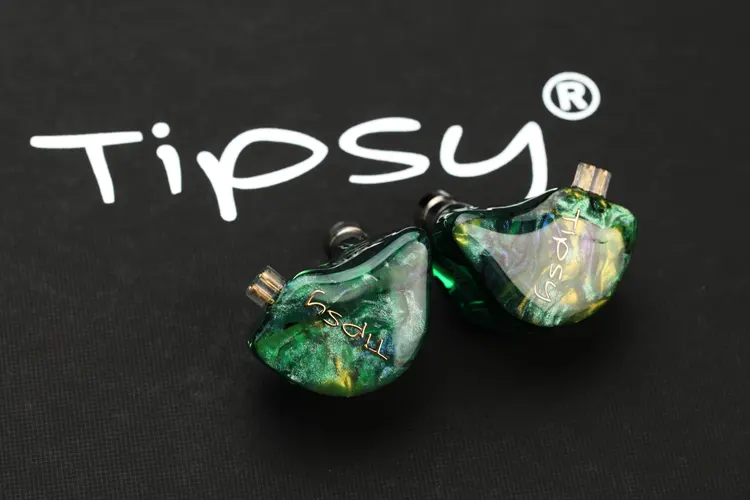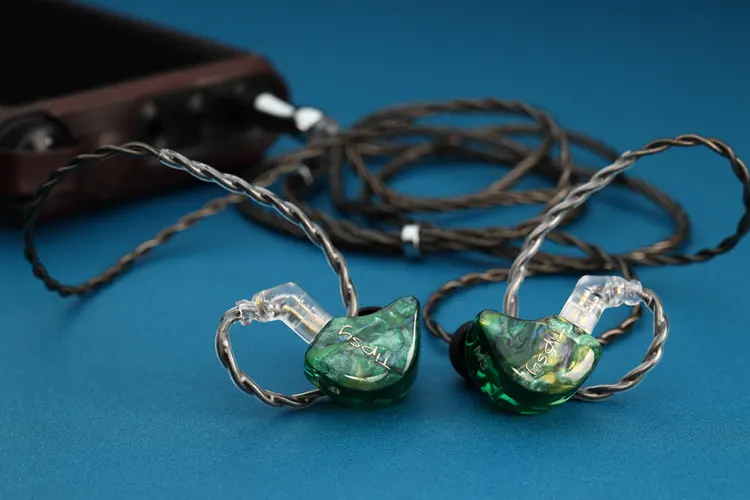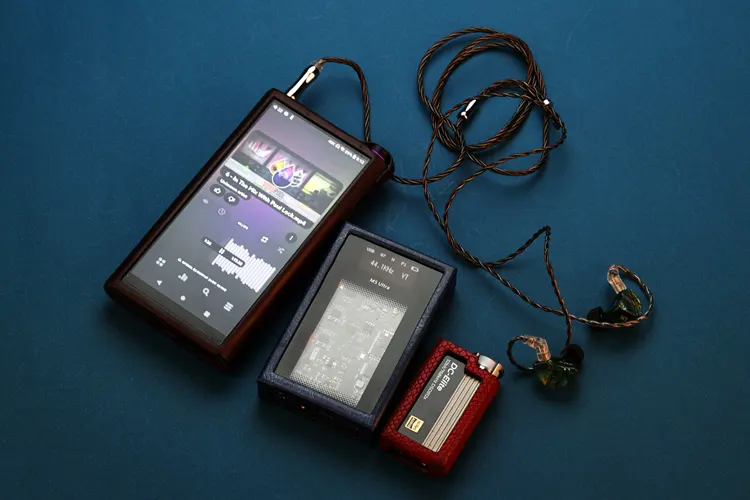Blog
Tipsy M3 Review — Headfonics

Marcelo reviews the Tipsy M3, a new hybrid 9.2mm PET-titanium dynamic and dual balanced armature driver universal IEM priced at $219.00.
Disclaimer: This sample was sent to me in exchange for my honest opinion. Headfonics is an independent website with no affiliate links. I thank Tipsy Audio for their support.
You can read about previous IEM products previously reviewed on Headfonics here.
This article follows our latest scoring guidelines, which you can read here.
Tipsy, founded in 2016 by recording engineer Masan Lee, aims to recreate studio-quality sound inspired by the Shenzhen Concert Hall and produces IEMs that are aimed at the professional market in terms of tuning, including the soon-to-be-reviewed Tipsy M5, which has a reference-level monitoring sound.
However, Tipsy also releases IEMs that appeal to the consumer HiFi market. IEMs such as the Tipsy M3 are priced at $219.99 and have a dynamic tuning to make the sound more exciting.
This makes me wonder how the M3 will compare to other hybrid IEMs from purely consumer-market-oriented brands, such as Kiwi Ears KE4 and Hidizs MS2 PRO. Let’s find out.


Features
The M3 is a hybrid IEM of a single dynamic driver and two BA featuring a 9.2mm PET-titanium coated dynamic driver and two customized composite balanced armature drivers.
An independent tri-band acoustic partitioning design ensures precise separation between lows, mids, and highs.
The M3 features a Precision Hand-Finished Faceplate that is sweat-resistant up to IPX4, but I would avoid getting the nozzle wet. Sensitivity is listed as 105 dB/mW, and its impedance rating is 17Ω, which means it’s not hard to drive, though not super-sensitive.
The M3 also features a pressure relief system to alleviate pressure build-up in the ear canal, which can cause pain in the ears, nausea, and headaches. M3 doesn’t have that issue.


Design
The M3’s shell is a 3D-printed resin, hand-painted with Light-reactive artistic designs crafted for uniqueness and visual depth.
The M3 uses metal nozzles with lips at the edge, preventing ear tip slippage, covered by a perforated metal grill. There is a small hole near the nozzle and a bigger vent with a horn-shaped gold orifice near the QDC type 2 pin connector.
I find the shape and green color of the shells on my review sample to be visually appealing, but the M3 is also available in red with a similar pattern and in plain black.


Stock Cable
The M3’s included cable is thin enough for easy portability but thick enough not to tangle easily. It is a dark, titanium colored 4-core cable, around 1.1mm thickness per wire, with QDC-style IEM connectors; it is only available with a 3.5mm plug.
I wish the M3 were available with a 4.4mm balanced cable, because my audio ecosystem is centered around using a balanced 4.4mm connection.


Comfort & Isolation
Thanks to M3’s Skin-Friendly Resin Housing and Ergonomic, lightweight build, and only 4.4 grams of weight with a -26dB passive noise isolation.
Plus, the effective pressure relief system makes the M3 very comfortable to wear, even during long listening sessions, anytime, anywhere, without any pressure build-up or discomfort due to weight.
I find the isolation to be the same as any IEMs with a pressure relief system; some sound gets in, but they are easily masked by the music being played at a moderate volume level. I haven’t noticed the M3 to be more sound-isolating than my other sets.


Packaging & Accessories
The M3 came in a mid-sized, sleeved, black box with dimensions of 18cm x 18cm x 5cm, and photos and specs of the M3 were printed all around.
The insides are divided by black foam layers, with a velvety cloth stuck to the cardboard to prevent scratching the beautiful faceplate of the IEMs.
This set includes a pair of memory foam tips, three pairs of silicone ear tips, a 3.5mm to 6.35mm adapter, a removable 3.5mm cable, a metal storage case, a user manual, and a pair of IEMs.
I had a positive unboxing experience, thanks to its well-designed, premium-looking packaging.
Sound Impressions
A 24-hour burn-in was done, but I still felt it needed more, so I left the M3 burning in for a total of about 50 hours. This resulted in a deeper sub-bass, clearer midrange, and smoother treble.
I used my iBasso DC-Elite, MUSE HiFi M5 Ultra DAC amplifiers, using my Android phone, OnePlus 13, as the music source, and the FiiO M15S DAP, using either UAPP or PowerAmp music player App.
Black silicone ear tips were used because I don’t like using the included foam tips. They’re not comfortable for my ears and tend to reduce the sound energy.
I borrowed a third-party 4.4mm balanced cable with QDC connectors from another IEM set to maximize power from the sources and ensure equal sound quality during comparisons with other IEMs.


Measurements
My measurement reveals a good left and right channel matching, indicating a high manufacturing quality. There is a good balance between the bass and treble, but the midrange is recessed, indicating a V-shape IEM.
Summary
I read about Tipsy’s background history days before unboxing and listening to the M3, so I had no idea what to expect. However, I have an impression based on the the Tipsy M5 (which is currently being tested) that the M3 would have a monitoring-style tuning.
When I finally got to listen to the M3, I was a little surprised to find that it has a V-shaped-sounding IEM, and not mildly or overly, just V-shaped, characterized by highly boosted bass and treble, with a moderately recessed midrange.
I love the way M3 delivers its bass. The sub-bass is loud, and every time there is a thud and rumble in the recording, there is a sense of air movement without losing control of the driver diaphragm.
Needless to say, the M3 does not have the tightest bass; what it has instead is bass that sounds larger -than-life.
The midrange is recessed, but not by much that it sounds too far back in the musical presentation; it is just moderately recessed and is not buried by the bass and treble.
The treble is elevated and extended, but avoids casuing immediate fatigue; it is just a normal treble for what a V-shaped IEM should be.
I like the clean, extended, and airy treble rendition, as there are many details and micro-details to be heard. I hear a clean, smooth decay, and the shimmer of cymbal splashes, sounding realistic and adding greatly to the musically engaging performance of the M3.


Coloration
Other than the previously stated V-shape sound signature, which is a coloration in itself there is not much unnatural coloration in the M3 sound signature.
Still, if I have to judge it, the bass sounds a little slow and less defined on fast and bassy songs. I also hear some peakiness in the treble, but not as pronounced as the measurement suggests.
Soundstage
Thanks to the M3’s relatively controlled bass, which does not bleed into the midrange and cause muddiness, and clean midrange and treble, despite its V-shape tuning, its soundstage performance is surprisingly good; it is large and open-sounding.
Soundstage shape is wider than deep. I hear a broad spread of sound and ambient queue from the extreme left to the right. There is very good lateral panning performance, with the images retaining their definition, and there are hardly any gaps between them.
The soundstage depth is good: I hear good front-to-back placement of the singer and instruments, still, not as deep as it is wide. Center imaging is good as well; the main vocals have good definition and stability with a laid-back presence.
It might not have the best holography, but I find M3’s staging and imaging are competitive, and certainly above average in terms of general performance.
Dynamics
The M3 is bubbling with energy and dynamics, especially in the bass. There is never a dull moment listening to the M3, as I find the boosted bass drastically enhances the sound’s dynamics. The M3 can go loud when fed with more power without changing tonality.
I do feel the midrange lags behind the bass and treble in terms of energy, though, and this is common with most V-shaped tuned IEMs.
Click on page 2 below for my recommended pairings and selected comparisons.













